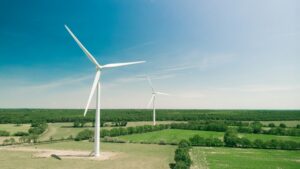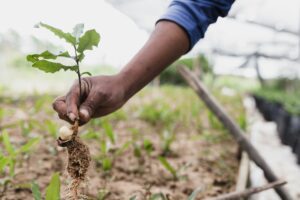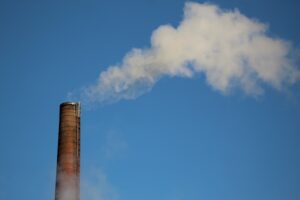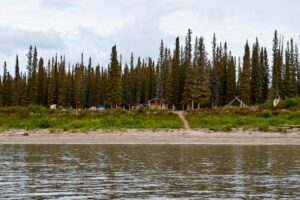Alberta 
Alberta using controversial report to rally against proposed oil and gas emissions cap
 Alberta’s government is using a controversial report forecasting a decline in oil and gas production in Canada to rally against the federal government’s proposed greenhouse gas emissions caps. The report completed by S&P Global Commodity Insights for the Canadian Association of Petroleum Producers (CAPP), offers various scenarios forecasting oil production in Canada based on various emissions caps. The report suggests emissions caps could lead to a loss of jobs and GDP across Canada by 2035. The Government of Alberta released a joint statement on behalf of Premier Danielle Smith, Minister of Environment and Protected Areas Rebecca Schulz and Minister of Energy and Minerals Brian Jean using the report to advocate for Ottawa to scrap the emissions cap. A statement from the office of Canada’s Minister of Environment and Climate Change called the report an “analysis of a non-existent scenario.” Based on the analysis, CAPP said the proposed emission cap framework is “unnecessary and should not proceed.” Environmental groups are calling the report misleading. Environmental Defence argued that the proposed emissions cap would create regulations for what oil and gas companies have already promised to do.
Alberta’s government is using a controversial report forecasting a decline in oil and gas production in Canada to rally against the federal government’s proposed greenhouse gas emissions caps. The report completed by S&P Global Commodity Insights for the Canadian Association of Petroleum Producers (CAPP), offers various scenarios forecasting oil production in Canada based on various emissions caps. The report suggests emissions caps could lead to a loss of jobs and GDP across Canada by 2035. The Government of Alberta released a joint statement on behalf of Premier Danielle Smith, Minister of Environment and Protected Areas Rebecca Schulz and Minister of Energy and Minerals Brian Jean using the report to advocate for Ottawa to scrap the emissions cap. A statement from the office of Canada’s Minister of Environment and Climate Change called the report an “analysis of a non-existent scenario.” Based on the analysis, CAPP said the proposed emission cap framework is “unnecessary and should not proceed.” Environmental groups are calling the report misleading. Environmental Defence argued that the proposed emissions cap would create regulations for what oil and gas companies have already promised to do.
Source: CTV News Calgary
Electricity Prices for Alberta
The Alberta power pool price averaged 3.537 cents per kWh in May 2024. This price is 3.324 cents lower than last month’s average of 6.861 cents. The pool price has averaged 10.698 cents per kWh over the last 12 months.
As of June 1, 2024, the forward market was predicting electricity prices for the calendar years of 2024, 2025, 2026, 2027, 2028, and 2029. These prices are 5.899, 5.495, 5.450, 5.775, 6.375, and 6.500 cents per kWh respectively.
Gas Prices for Alberta
Direct Energy’s gas rate for May 2024 was $1.535 per GJ in Alberta. The June 2024 rate has been set at $1.050 per GJ. Alberta gas prices have averaged $2.491 per GJ over the last 12 months.
As of April 1, 2024, the forward market was predicting gas prices for the calendar years of 2024, 2025, 2026, 2027, and 2028. These prices are 1.61, 2.88, 3.28, 3.36, and 3.39 cents per GJ respectively.
British Columbia 
Feds lean on B.C. to produce more critical minerals
B.C. is playing a crucial role in the federal government’s plan to ensure Canada produces 31 minerals deemed critical to the economic future. During a Conversations Live project hosted by Stuart McNish, an expert panel outlined how these important minerals are part of a larger geopolitical movement and that B.C. has huge prospects for growth and job creation in mining. As an example, Michael Goehring, president and CEO of the Mining Association of B.C., said that B.C. produces 80 per cent of Canada’s copper and that mineral is turned into the “electrification metal.” As an example, Michael Goehring, president and CEO of the Mining Association of B.C., said that B.C. produces 80 per cent of Canada’s copper and that mineral is turned into the “electrification metal.”
China has been the leader in establishing secure supply chains for critical minerals, which are essential to producing EV batteries, wind turbines, cellphones and a plethora of new technologies. Premier David Eby said mineral exploration in B.C. in 2022 was a record $740 million, mostly spent looking for gold, but increasingly targeting copper, nickel and the rare earth-niobium. The global demand for these minerals has skyrocketed alongside every new technological advancement and the shift away from internal combustion engines toward battery power. Ross Beaty, chair of Equinox Gold Corp., said Canada was a world leader in mining exploration and had a “very, very competent human resource group that supports that.” Beaty pointed out that critical minerals needed to be turned into metals in order to be useful and that Canada did not have a lot of processing capacity. It was noted that most CO2 emissions associated with the mining sector occurred during processing, not mining.
Source: Vancouver Sun
Ontario 
Why 155 Ontario communities are now “Unwilling Hosts” to new wind power sites
 Ontario is looking to add more renewable energy to its electricity supply, which will likely mean more wind turbines going up across the province. However, that might be prove difficult with so many municipalities no longer interested in wind. “We know a lot more about wind power than we did in 2009. It was supposed to bring lots of jobs. That turned out not to be true. It was going to be a reliable source of power. That turned out not to be true. It was supposed to be cheap power. Not true. Our electricity bills went up 250 per cent after the turbines went up,” said Jane Wilson, founder of Wind Concerns Ontario. Ontario’s Independent Electricity System Operator (IESO) has plans to add roughly 5,000 MW of wind, hydro, solar, and biomass energy by 2030. There’s currently 5,500 MW of wind turbines built in Ontario today. Not everyone is sour about the IESO’s renewable renewal. Wind energy is just what Ontario needs, said Jack Gibbons from Ontario’s Clean Air Alliance. “If we integrate our wind and solar with Quebec’s storage option, then we can convert wind and solar into a firm 24/7 source of baseload electricity for Ontario,” he said.
Ontario is looking to add more renewable energy to its electricity supply, which will likely mean more wind turbines going up across the province. However, that might be prove difficult with so many municipalities no longer interested in wind. “We know a lot more about wind power than we did in 2009. It was supposed to bring lots of jobs. That turned out not to be true. It was going to be a reliable source of power. That turned out not to be true. It was supposed to be cheap power. Not true. Our electricity bills went up 250 per cent after the turbines went up,” said Jane Wilson, founder of Wind Concerns Ontario. Ontario’s Independent Electricity System Operator (IESO) has plans to add roughly 5,000 MW of wind, hydro, solar, and biomass energy by 2030. There’s currently 5,500 MW of wind turbines built in Ontario today. Not everyone is sour about the IESO’s renewable renewal. Wind energy is just what Ontario needs, said Jack Gibbons from Ontario’s Clean Air Alliance. “If we integrate our wind and solar with Quebec’s storage option, then we can convert wind and solar into a firm 24/7 source of baseload electricity for Ontario,” he said.
Source: CTV News London
Saskatchewan 
Missed emissions goals at Sask. carbon capture project raising questions
A signature carbon capture and storage project in Saskatchewan continues to miss emissions reduction goals, raising questions about the cost-effectiveness of the technology, says a report. “We don’t think carbon capture works as well as industry and promoters claim,” said David Schlissel, an analyst who wrote the report for the Institute for Energy Economics and Financial Analysis, an international non-profit agency. Proponents originally said the process would capture up to 90 per cent of the plant’s carbon emissions. That would amount to about a million tonnes of climate-changing carbon dioxide a year — the rough equivalent of emissions from 200,000 cars. That goal has never been reached, said Schlissel. When all the plant’s emissions are factored in, including flue gas that is simply vented, the average capture rate is 57 per cent, he said. The report says capture is limited by both technical issues and the demand for carbon dioxide from the energy industry, which uses the gas to extract more oil from depleting reserves.
Knowledge Centre spokesman Grady Semmen said the plant has managed to keep nearly six million tonnes of carbon dioxide out of the atmosphere. He also said almost all the CO2 from the emissions sent through the capture facility are separated out. Schlissel said carbon capture can be worthwhile in some circumstances, especially at a smaller scale. He said it remains questionable if the technology can work at the level proponents suggest and asks whether it’s the most cost-effective way to reduce emissions at large operations.
Source: CBC
Manitoba 
Green plan taking root in Selkirk, city planting 260 trees this spring
 The City of Selkirk is making the community a whole lot greener and healthier by planting hundreds of new trees this spring. According to Selkirk’s urban forestry and naturalization coordinator Justin Torcia, benefits from an abundance of trees in communities include beautification, protecting infrastructure from heat and UV, helping to absorb stormwater runoff, lowering carbon and pollutants to improve air quality and providing habitat for birds and small mammals. “Following Selkirk’s street tree policy to increase tree species diversity, there will be approximately 18 different species planted on the medians and boulevards,” Torcia said. “This will ensure that no single area will be stripped of trees if an invasive pest or disease is introduced to our community, as we’ve seen with Dutch Elm Disease and Emerald Ash Borer.” Torica added the city’s street tree policy lists criteria that help determine where trees should be planted in Selkirk, including areas where the land drainage system is over capacity, streets with less than eight trees per 100 metres, and whether the street is a main artery, collector, or residential street. The policy also considers streets with household incomes less than the average household income for Selkirk, as the city said, “studies show lower-income neighbourhoods typically have less of an urban canopy to help stay cool in the warmer months of the year.”
The City of Selkirk is making the community a whole lot greener and healthier by planting hundreds of new trees this spring. According to Selkirk’s urban forestry and naturalization coordinator Justin Torcia, benefits from an abundance of trees in communities include beautification, protecting infrastructure from heat and UV, helping to absorb stormwater runoff, lowering carbon and pollutants to improve air quality and providing habitat for birds and small mammals. “Following Selkirk’s street tree policy to increase tree species diversity, there will be approximately 18 different species planted on the medians and boulevards,” Torcia said. “This will ensure that no single area will be stripped of trees if an invasive pest or disease is introduced to our community, as we’ve seen with Dutch Elm Disease and Emerald Ash Borer.” Torica added the city’s street tree policy lists criteria that help determine where trees should be planted in Selkirk, including areas where the land drainage system is over capacity, streets with less than eight trees per 100 metres, and whether the street is a main artery, collector, or residential street. The policy also considers streets with household incomes less than the average household income for Selkirk, as the city said, “studies show lower-income neighbourhoods typically have less of an urban canopy to help stay cool in the warmer months of the year.”
Source: Winnipeg Sun
New Brunswick 
Province leads country in reducing greenhouse gas emissions
An annual report tracking emissions from all sectors of the Canadian economy indicates New Brunswick continues to lead the country in reducing greenhouse gas emissions. The province ranks first in Canada, having reduced emissions by 38 per cent between 2005 and 2022. Based on the 2024 National Inventory Report, emissions in 2005 were 20.1 megatonnes; by 2022 the figure was reduced to 12.5 megatonnes. The province’s electricity sector was the greatest contributor to reducing emissions, having cut its emissions by 58 per cent between 2005 and 2022. Actions taken by NB Power included adding 352 megawatts of wind generation – including 38 megawatts of new Indigenous business-based wind energy – resulting in less use of fossil-fuelled generating stations; adding 20 megawatts of renewable energy from small-scale, locally owned generators; and the implementation of energy efficiency programs.
Source: Government of New Brunswick
Prince Edward Island 
P.E.I. speeds up tree planting with new programs and greenhouses
 The province is ramping up tree production over the next six years, following in the footsteps of a federal program called 2 Billion Trees. The national program aims to plant that many trees by 2031. Provincially, there are four programs that will plant 300,000 additional trees per year. That’s on top of the 1 million trees that were already being planted annually. The P.E.I. 2 Billion Trees program is run by the provincial Department of Environment, Energy and Climate Action. “These trees will help us reach our net zero goals as well as hold carbon, create buffer zones, help with wildlife corridors, and generally increase our green spaces on the Island,” said Hailey Blacquiere, the 2BT co-ordinator for Prince Edward Island. The program began in 2022 with support from the federal government, which is picking up half of the $3.3 million cost over three years. A second phase of the program is expected to take the program to 2031.
The province is ramping up tree production over the next six years, following in the footsteps of a federal program called 2 Billion Trees. The national program aims to plant that many trees by 2031. Provincially, there are four programs that will plant 300,000 additional trees per year. That’s on top of the 1 million trees that were already being planted annually. The P.E.I. 2 Billion Trees program is run by the provincial Department of Environment, Energy and Climate Action. “These trees will help us reach our net zero goals as well as hold carbon, create buffer zones, help with wildlife corridors, and generally increase our green spaces on the Island,” said Hailey Blacquiere, the 2BT co-ordinator for Prince Edward Island. The program began in 2022 with support from the federal government, which is picking up half of the $3.3 million cost over three years. A second phase of the program is expected to take the program to 2031.
Source: CBC
Québec 
Québec invests $1.15 million in support of biomass projects
The Government of Quebec government recently announced a three-year, $1.15-million grant to the Consortium de recherche et innovations en bioprocédés industriels au Québec (CRIBIQ) to promote innovation and pre-commercialization in the supply and conditioning of forest biomass for bioenergy production. The CRIBIQ is an industrial research cluster serving over 22,000 companies and more than 40 public research institutes in Quebec. As a non-profit organization funded mainly by the Quebec government, CRIBIQ supports and promotes innovative projects in the industrial sectors of the bioeconomy – agrifood, industrial bioproducts and the environment. The initiative will directly stimulate innovation in the forest biomass bioenergy sector, which, along with other energy sources, will contribute to the government’s objective of reducing Quebec’s greenhouse gas (GHG) emissions by 37.5% by 2030, compared with the 1990 baseline year. Other targets could also be achieved, such as reducing Quebec’s consumption of petroleum products by 40%, increasing renewable energy production by 25% and promoting bioenergy by increasing its production by 50%.
Source: Canadian Biomass
Newfoundland and Labrador 
Big N.B. emitters mostly exceeded greenhouse gas caps in 2021-22
 New Brunswick’s new carbon-price credit market is up and running, and so far it appears there are more large polluters blowing past their emissions caps than there are staying below them. Data provided by the Department of Environment and Climate Change show the province’s 15 largest emitters of greenhouse gases bought almost 10 times as many emissions credits as they earned in 2022 under the industrial carbon pricing program. One energy-sector watcher says it’s too early to conclude the system isn’t effective at lowering emissions. “The reality is right now, it’s very, very new,” said Jonathan Alward, the vice-president of policy at the Atlantica Centre for Energy, an industry-supported research institute. The province’s output-based pricing system was set up to comply with the federal government’s climate plan and its requirement of a price on greenhouse gas emissions.
New Brunswick’s new carbon-price credit market is up and running, and so far it appears there are more large polluters blowing past their emissions caps than there are staying below them. Data provided by the Department of Environment and Climate Change show the province’s 15 largest emitters of greenhouse gases bought almost 10 times as many emissions credits as they earned in 2022 under the industrial carbon pricing program. One energy-sector watcher says it’s too early to conclude the system isn’t effective at lowering emissions. “The reality is right now, it’s very, very new,” said Jonathan Alward, the vice-president of policy at the Atlantica Centre for Energy, an industry-supported research institute. The province’s output-based pricing system was set up to comply with the federal government’s climate plan and its requirement of a price on greenhouse gas emissions.
Under the system, the Higgs government established individual emissions standards for each of the 15 large emitting plants and requires them to reduce greenhouse gas levels by two per cent each year until 2030, when they must reach 82 per cent of the standard. Emitters buy a credit for every tonne of GHGs they emit above their yearly target — either a “fund credit” issued by the provincial government at $80 per tonne, or a “performance credit.” Plants that emit less than their cap earn one performance credit for each tonne they stay below the target, and they can sell those credits to the plants that go over. The other option, provincially issued “fund credits,” generate revenue that goes into a pool the government will use to subsidize emissions-reduction projects by the 15 large emitters. The province will use the revenue to fund up to 50 per cent of emissions-reductions projects among the big emitters.
Source: CBC
Nova Scotia 
Industries getting support from N.S. to move towards cleaner fuels
Industries, businesses and communities are starting to switch to low-carbon and renewable fuels with help from the new Clean Fuels Fund. The fund helps replace fossil fuels with cleaner fuels for heating, transportation and industrial processes. Options include biofuels and biomass from forestry waste products, green hydrogen and renewable natural gas. The Clean Fuels Fund is a commitment in Our Climate, Our Future: Nova Scotia’s Climate Change Plan for Clean Growth. The plan aims to create a cleaner, healthier and more sustainable future for all Nova Scotians. It includes initiatives to reduce greenhouse gas emissions, switch to clean energy and transportation, create a clean economy, make homes and buildings energy efficient and able to stand up to the impacts of climate change, and help Nova Scotians adapt to the changing climate.
Source: The Laker News
Nunavut 
Government of Canada and Government of Nunavut Launch the Nunavut Regional Energy and Resource Table
The Government of Canada is working in collaboration with territorial, provincial and Indigenous partners to unlock economic opportunities, create sustainable jobs and fight climate change. Canada’s Minister of Energy and Natural Resources, Nunavut’s Minister of Human Resources, Economic Development and Transportation, Mines and Trade, and Nunavut’s Minister of Environment, Energy, Culture and Heritage, announced that Nunavut is formally joining the Regional Energy and Resource Tables (Regional Tables). The Regional Tables are a collaborative initiative among the federal government and individual provinces and territories, alongside Indigenous partners and with the input of key stakeholders, that aim to advance, accelerate and collaborate on the top economic priorities in the energy and resource sectors in each of Canada’s regions as we transition to a net-zero future. Working collaboratively through the Regional Energy and Resource Table, Canada and Nunavut, along with Nunavut Tunngavik Incorporated, will identify and advance economic opportunities across Nunavut’s energy and resource sectors.
Source: Government of Canada
Northwest Territories
Big River awarded funding for Mackenzie River energy study
 Big River Services Centre LP says it is hoping to become the first company in the NWT to achieve zero-carbon status using hydrokinetic technology. Big River said it has received $353,710 in federal funding for a study on the Mackenzie River’s potential to generate energy using an in-stream turbine. Hydrokinetic technologies produce renewable energy by harvesting the kinetic energy of water or the energy that results from its motion. Big River said while the technology is in its early stages, CTHHC has installed a turbine on the Winnipeg River which can operate year-round, including under the ice. The research project will also include an energy study on the impact of a micro-grid on Fort Province’s energy load.
Big River Services Centre LP says it is hoping to become the first company in the NWT to achieve zero-carbon status using hydrokinetic technology. Big River said it has received $353,710 in federal funding for a study on the Mackenzie River’s potential to generate energy using an in-stream turbine. Hydrokinetic technologies produce renewable energy by harvesting the kinetic energy of water or the energy that results from its motion. Big River said while the technology is in its early stages, CTHHC has installed a turbine on the Winnipeg River which can operate year-round, including under the ice. The research project will also include an energy study on the impact of a micro-grid on Fort Province’s energy load.
Source: Cabin Radio
Yukon 
Carbon offsetting not possible at Faro mine cleanup in Yukon, feds say
It won’t be possible to offset the significant emissions caused by the Faro mine site clean-up in the Yukon, according to the federal government. In a document filed to the Yukon Environmental and Socio-economic Assessment Board (YESAB), the government calls the board’s recommendations for carbon offsetting at Faro “aspirational, but ultimately not feasible to execute” due to lack of technology and available offset protocols. Once the largest open pit lead-zinc mine in the world, the Faro site was abandoned in 1998. It’s now one of Canada’s most contaminated sites, containing 260 million tonnes of waste rock. The mine’s cleanup is expected to take 15 years and will produce a “significant magnitude” of emissions, according to YESAB. The board recommended in a draft screening report published last February that the cleanup could go ahead if all emissions were offset. It suggested using electric vehicles, planting trees and purchasing carbon offset credits to mitigate emissions. According to Crown-Indigenous Relations and Northern Affairs Canada (CIRNAC), there aren’t any approved offset protocols that are relevant to the Yukon, nor are there any private offsetting projects that could be purchased in the territory’s ecosystem. CIRNAC has proposed an emissions reduction plan instead of carbon offsetting, to be written after receiving a water licence and updated every five years.
Source: CBC